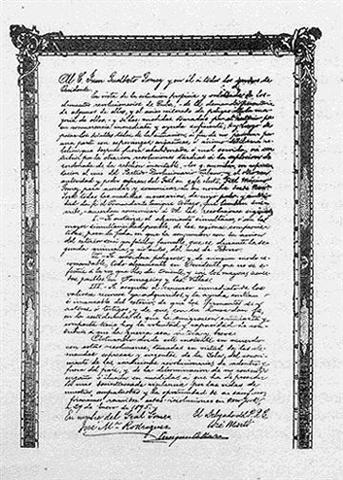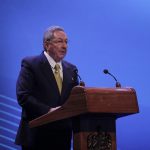Taken from Prensa Latina
Mayabeque, Cuba: With the joy of the rebirth of the voices of the Free Homeland, in the Cuban fields, on February 24, 1895, veteran mambises and young revolutionaries, summoned by José Martí, stood up.
The Apostle of the independence of Cuba touched each thought and heart of the different human factors, the veterans of the so-called Great or Ten Years War (1868-1878) and the Chiquita (1879-1880), as well as the new generations of patriots.
Only with a superior organization was it possible to undertake again the difficult path for independence and sovereignty, which had already cost the Cuban family so much sacrifice and blood, the Master understood.
Thus, he had the genius to found the Cuban Revolutionary Party (PRC), proclaimed on April 10, 1892, as a united front, without electoral intentions and the first to make an independence revolution. One of Martí’s most arduous efforts was the elevation of patriotic sentiment, in the legitimization of the Cuban nation forged in the fields of Cuba Libre during ten years of glory and sacrifices, in the first independence war.
In the Patria newspaper, which he founded on March 14, 1892, he conveyed an optimistic spirit of combat in preparation for the war of 1895.
Despite the difficulties during the preparations and the uprising, the Revolution got under way again, after a long truce.
THE INDEPENDENTIST REVOLUTION IN MARCH
Everything was patiently prepared when the so-called failure of the Fernandina Plan occurred on January 10, 1895 with the intervention of the US authorities in that Florida port.
In three small steamers, chartered legally, but with a secret mission, the armaments would leave, bought with the funds contributed mostly by the humblest layers of the Cuban emigration. Experienced fighters would arrive in Cuba to support the insurrection in different parts of the country.
Although this could delay the war, the road was resumed again and the uprising order was signed again by Enrique Collazo, José Martí and José María (Mayía) Rodríguez on behalf of Máximo Gómez, on January 29.
The patriot and journalist Juan Gualberto Gómez, representative in Cuba of the PRC, had the mission commissioned by Martí to transmit the uprising order to the entire country.
The event should occur as simultaneously as possible during the second fortnight and not before, in the month of February; the conspirators chose Sunday, February 24, the first day of carnival, ideal for passing through the fields and meeting people, including horsemen, without attracting attention.
“Accepted transfers,” Juan Gualberto Gómez replied to Martí in New York, after consulting the conspirators. Las Villas and Oriente accepted; only Camagüey reported that he could not initiate the movement, but would support it later.
The greatest eastern generals Guillermo Moncada and Bartolomé Masó woke up, respectively, on La Lombriz hill and in Bayate. That same day veterans of 1968 and new mambises left Santiago de Cuba for El Caney, San Luis and El Cobre.
Another group attacked and burned the town of Loma del Gato. Pronouncements also occurred in Baire, Jiguaní, in areas of Bayamese and Guantánamo, (Pedro Agustín Pérez, Periquito).
At the end of the month, some 2,500 mambises were fighting in Oriente.
The situation was different in the West: 1968 veterans Generals Francisco Carrillo –in Las Villas– and Julio Sanguily –in Havana– were arrested in their homes and another of the Havana leaders of the insurrection, Colonel José María Aguirre, was taken prisoner when He was going to take a train to Matanzas.
The uprising in Matanzas was also frustrated when a concentration of forces in Ibarra failed. There, Juan Gualberto Gómez, Antonio López Coloma, both from Matanzas, and other young people who had arrived from Havana were left alone and persecuted.
The same thing happened to Martín Marrero, in La Yuca, near Jagüey Grande, to Joaquín Pedroso in Los Charcones, Aguada de Pasajeros, and to Pedro Betancourt who arrived late in Ibarra. López Coloma was shot, while Gómez and Betancourt, deported to Spain.
In Pinar del Río, without veteran leaders, the conspirators did not receive the order to rise up.
Nothing would stop the events for the next few months. The Liberation Army gained strength with the arrival in April of the expeditions of Martí and Gómez, Flor Crombet, Antonio and José Maceo, and other experienced and new combatants.

Redacción Digital
Equipo de redactores del sitio web de Radio Mayabeque



